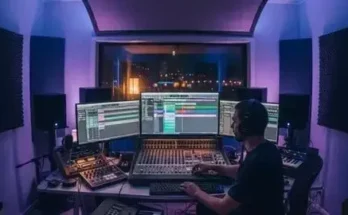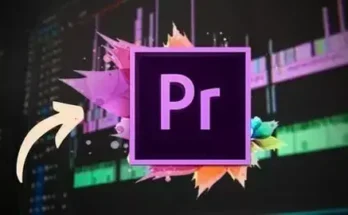Publisher: Truefire | Language: English
Video: MP4, 960×540 (16:9), 971 Kbps, 29.970 fps
Audio: MP3, 192 Kbps, 48 Khz, 2 channels
Size: 1.06 Gb
The pentatonic scale is typically the first scale we learn to play on the guitar. It’s ubiquitous in rock, country, and blues soloing but unfortunately, many guitarists fail to recognize its potential for jazz, and they avoid using it altogether. However, integrating pentatonic scales into traditional bebop vocabulary is a powerful way to add vibrant colors and rich sonic textures to your jazz improvisation, AND it’s wicked easy to do. Sean McGowan’s Pentatonic Palettes for Jazz Guitar will show you how.
”The purpose of this course is twofold, first, we’ll learn the layout of the pentatonic scales on the fretboard and apply them to jazz harmony using substitution devices, chromatic sidestepping, and other concepts. Secondly, we’ll learn and explore three additional pentatonic scales, closely related to the minor and major pentatonics we already know, that sound totally at home in a jazz context.”
Sean organized the course into 4 sections. In the first section, you’ll explore the major pentatonic and it’s five inversions (including the minor pentatonic) allowing you to seamlessly connect all the regions of the fretboard.
”You’ll learn how to map out pentatonic scales all over the fretboard, in all keys, and also how to apply them to contemporary jazz and ii-V-I progressions. You’ll learn a few minor pentatonic substitution devices that will work over static progressions and modal tunes. We’ll also explore some chromatic side-stepping approaches, which will add tension and resolution over static chord progressions.”
Section 2 covers some lesser known pentatonics that will add a colorful dimension to your soloing. ”In the second section of this course, we’ll explore three lesser-known pentatonics, namely the Kumoi (Minor 6), Dominant, and Hirajoshi scales, and how to apply them in various contexts.”
In the 3rd Section, you’ll work with various ii-V-I progressions and pentatonic applications. ”In the third section of the course, you’ll play through a series of etudes and learn how these concepts apply to ii-V-I progressions, featuring both unaltered and altered dominant V7 chords.”
In the final section, you’ll put all the concepts to work over 6 etudes based on classic jazz standards, modern modal progressions, and traditional jazz blues. Sean will perform each etude and then break it down for you in detail explaining all of the core concepts and approaches.
Fall Foliage – ”Our first performance étude is based on the classic jazz standard, ‘Autumn Leaves’. This étude will feature several substitution devices we explored using the Minor Pentatonic, Kumoi, and Dominant scales and regions.”
Friends – ”Now let’s work through the chord progression to a jazz standard very popular among guitarists, ‘Just Friends’. There are several opportunities throughout this progression to use chromatically shifting pentatonic substitution devices. We can also create continuity between major to minor chord moves, and among seemingly unrelated chords using minor pentatonic substitutions.”
Greater Love – ”Let’s take a look at the changes to the standard, ‘There Is No Greater Love’, which features a lot of different settings for dominant seventh chords. This étude emphasizes the Dominant Pentatonic scale, as well as some Kumoi applications.”
Impress-a-tonic – ”This next étude explores a medium-up tempo modal song, moving between D and Eb Dorian tonal centers, and based on the changes to ‘So What’ and ‘Impressions’. The solo features colorful minor pentatonic substitutions and chromatic side-stepping to create some ‘outside’ sounds.”
Tampa Bay Blues – ”Finally, let’s play a standard 12-bar jazz blues progression! This étude illustrates the use of all the pentatonic scales and substitution devices we’ve explored throughout this course.”
Sean will explain and demonstrate all of the key concepts and approaches along the way. You’ll get standard notation, tabs, and diagrams for the key examples and performance studies. Plus, Sean includes all of the rhythm tracks for you to work with on your own. In addition, you’ll be able to loop or slow down any of the performances so that you can work with the materials at your own pace.
Grab your guitar and let’s get pentatonic with Sean McGowan!
[toggle title=”Home page”]https://goo.gl/m4TnHW[/toggle]

http://alfalink.to/7c9ac4388867d4cc3f1c
Please REPORT in Comment Broken Links




